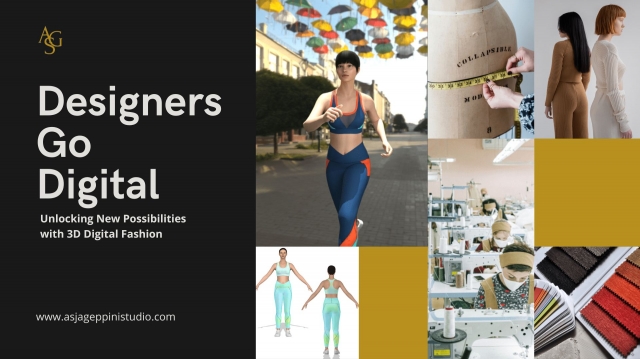In an era where technology is reshaping industries at an unprecedented pace, the world of fashion is undergoing a transformative shift as well. The convergence of fashion and technology has given birth to a revolutionary trend known as 3D digital fashion, where designers are harnessing the power of digital tools to create, visualize, and produce stunning garments. This leap into the digital realm is not only altering the way fashion is conceptualized, but also revolutionizing the entire design process. Let's explore how this shift is redefining the landscape of fashion design services, with the emergence of the 3D Fashion Designer and its impact on pattern making and clothing creation.
The Rise of 3D Fashion Designers
Traditionally, fashion designers would sketch their ideas on paper, and these sketches would then be translated into physical prototypes through a series of iterations. However, this process was not only time-consuming, but also limited the designer's ability to visualize the final product accurately. Enter the 3D Fashion Designer, a professional who employs cutting-edge software to create three-dimensional digital garments.
The 3D Fashion Designer utilizes specialized software that allows them to model garments in a virtual environment. This process offers unparalleled advantages, including the ability to manipulate fabrics, experiment with colors and textures, and even simulate how the garment would drape and move on a human body. This level of detail and realism significantly enhances the designer's ability to bring their creative vision to life. Moreover, it expedites the design process, enabling quicker iterations and reducing material wastage.
3D Digital Fashion and Pattern Making
One of the most intricate aspects of fashion design is pattern making. Traditionally, pattern makers meticulously create paper patterns that serve as templates for cutting and sewing fabrics. However, the introduction of 3D digital fashion has revolutionized pattern making.
With 3D digital fashion, designers and pattern makers can collaborate seamlessly in a virtual environment. The digital patterns can be adjusted in real-time, allowing for accurate fittings and alterations without the need for physical prototypes. This not only accelerates the design process but also leads to more precise and well-fitting garments. The technology even enables designers to visualize how a fabric's pattern would align across different sections of a garment, ensuring a harmonious design.
Unlocking New Possibilities
The fusion of fashion and technology through 3D digital fashion has unlocked a myriad of possibilities. One of the most noteworthy advancements is the potential to reduce waste and promote sustainability. By simulating garments in a digital space before they are physically produced, designers can make informed decisions about materials and design elements, thereby minimizing overproduction and excess inventory.
Additionally, 3D digital fashion opens doors for customization and personalization. Consumers could engage with fashion designers to co-create unique pieces tailored to their preferences. This not only enhances the consumer experience but also challenges the traditional notions of mass production.
Challenges and Future Prospects
While 3D digital fashion offers remarkable advantages, it's not without challenges. The technology requires specialized skills and training, demanding a learning curve for designers accustomed to traditional methods. Furthermore, ensuring the virtual representation accurately translates to the physical garment requires calibration and testing.
Looking ahead, the future of 3D fashion design appears promising. As technology continues to evolve, we can anticipate even more sophisticated software that seamlessly integrates real-world physics, enabling designers to achieve unparalleled levels of realism in their digital creations.
Conclusion
The world of fashion is embracing the digital revolution with open arms, and the rise of 3D fashion designers is at the forefront of this transformation. The integration of 3D digital fashion is altering the landscape of fashion design services, offering designers the tools to visualize, experiment, and create in ways previously unattainable. From pattern maker clothing to garment customization, this technology is reshaping the industry and unlocking new dimensions of creativity. As the journey into the digital realm continues, one thing is certain: the future of fashion has never looked more vibrant and exciting.






